Pistachios are beloved worldwide for their delicious flavor and their nutritious power — in fact, they’re one of the world’s most nuts. There were over 911,829 tons of pistachios grown in the world in 2022. That makes a lot of ice cream!
Pistachios are known for their versatility. Aside from consuming them in their pure form, there are a variety of pistachio products that are widely consumed. These range from desserts to exercise foods.
If you’re a pistachio lover and can’t get enough of this delightful legume, or you’re simply curious about the economics surrounding this flavorful food, take a look at this list that details all of the world’s top pistachio-producing countries.
Pistachio Facts
Pistachios have been eaten by humanity for millennia. There’s evidence that people ate pistachios in Central Asia dating back to 6,000 BC. The pistachio features in the writings of philosophers and saints, including Pliny The Elder.
The Pistachio is native to this Central Asian region. Wild pistachios grow freely in certain regions of countries like Iran and Afghanistan. The Hanging Gardens of Babylon, one of the wonders of the ancient world, was reportedly bedecked with pistachio trees.
Pistachio trees live for a very long time. An individual specimen may live to be up to 300 years old under favorable conditions. Typically, it takes a young pistachio tree between seven to ten years to begin producing fruit.
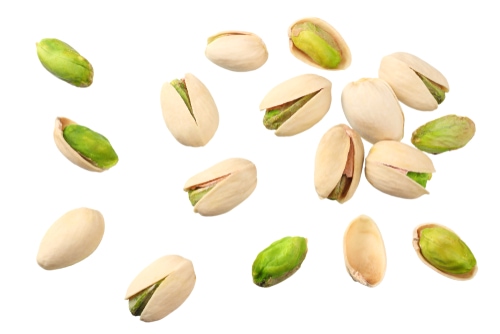
Pistachios have a distinctive green color.
©Tanya_mtv/Shutterstock.com
Nutritious and Delicious
Pistachios are quite nutritious and are a rich source of protein, fiber, thiamin, and vitamin B6. Additionally, they contain moderate amounts of calcium, riboflavin, vitamin E, and vitamin K.
Pistachios are quite “heart healthy”. Some scientific research suggests that eating approximately 1.5 ounces of these healthy fruits can lower one’s risk of heart disease. Another has found that they can help lower blood pressure.
Many of the nations where pistachios grow wild remain some of the top pistachio-producing countries on a global scale. However, pistachio trees have a versatile and resilient nature. This has allowed them to adapt to many countries where they do not grow native.
1. The USA

Most of the pistachios in The USA are grown in California.
©SNEHIT PHOTO/Shutterstock.com
The United States is the world’s top producer of Pistachios, and in 2022, it unloaded 523,000 tons of Pistachios onto global markets. That’s over half of the entire world’s production!
The lion’s share of US pistachios grows in California. This economic powerhouse of a state is the country’s agricultural workhorse. Overall, it produces the bulk of the produce grown in the United States across all crops.
Pistachios take to the semi-arid climate of California, which is dry for much of the year but prone to occasional heavy rains. This is quite similar to the pistachio’s native habitat.
Most of the pistachios in California are grown in Fresno County. This county altogether accounts for over 40% of the total yield in the state. Fresno County also leads the country in almond production.
Other states that produce pistachios include Arizona and New Mexico. These states have dry, arid conditions that are beneficial for pistachio production.
2. Iran
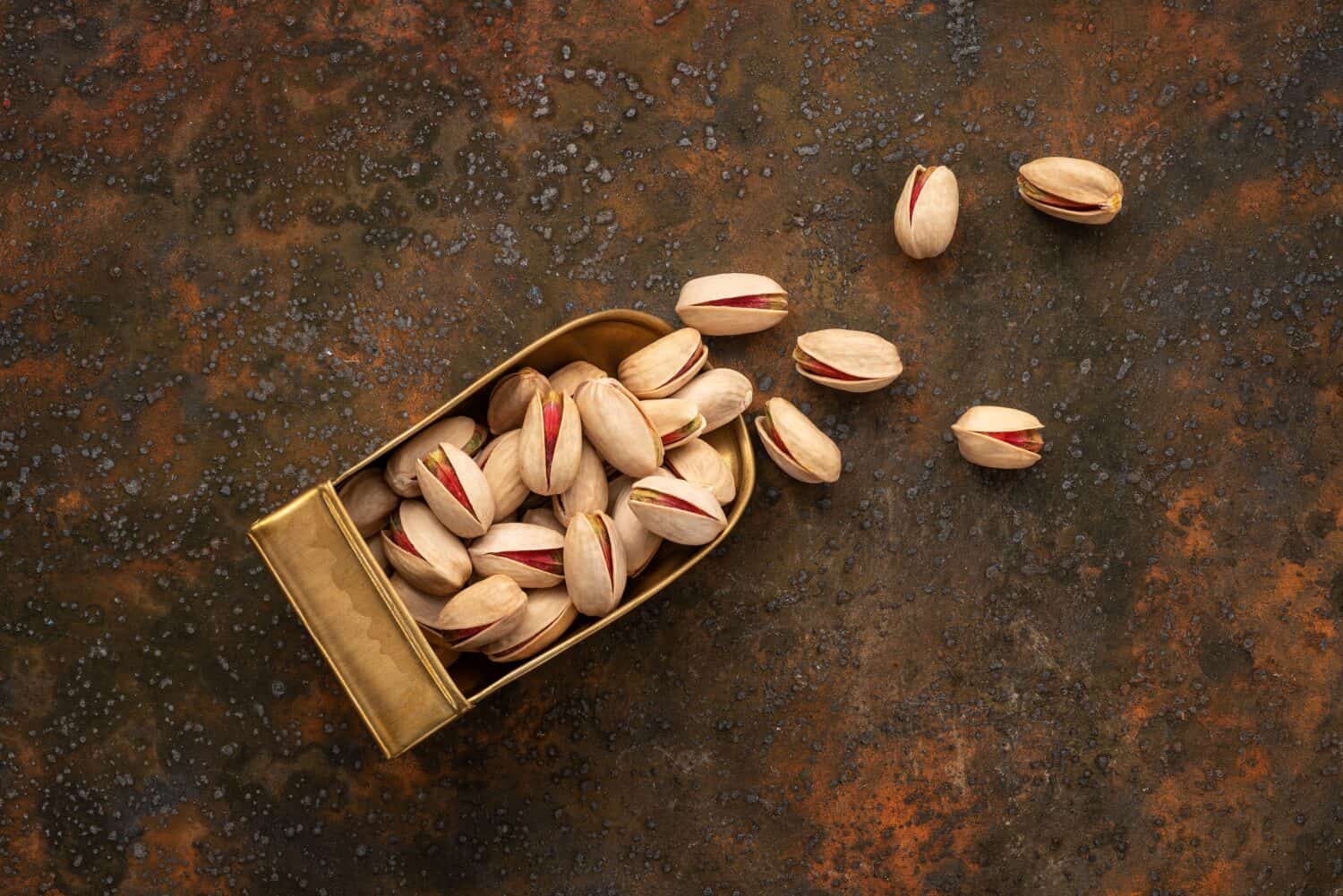
Iran was the largest producer of pistachios for decades.
©Mephobia.Food/Shutterstock.com
This entry is the world’s second-biggest pistachio producer. For much of human history, it was the largest before the US’s takeover of the top slot in the early 2000s. It is one of the countries where the pistachio tree grows natively.
For a long time, the US didn’t grow pistachios at all and simply imported them from Iran like most of the world. The tipping point that drove the United States to begin its own pistachio production came from political turmoil in the latter nation. This affected imports and exports to the United States.
After the 1979 Iranian Revolution, pistachio production plummeted sharply. However, in recent decades, production has begun to increase again. Pistachios are the country’s second-largest export after oil and gas. The United States and Iran account for over 70% of the world’s pistachio exports.
3. Turkey
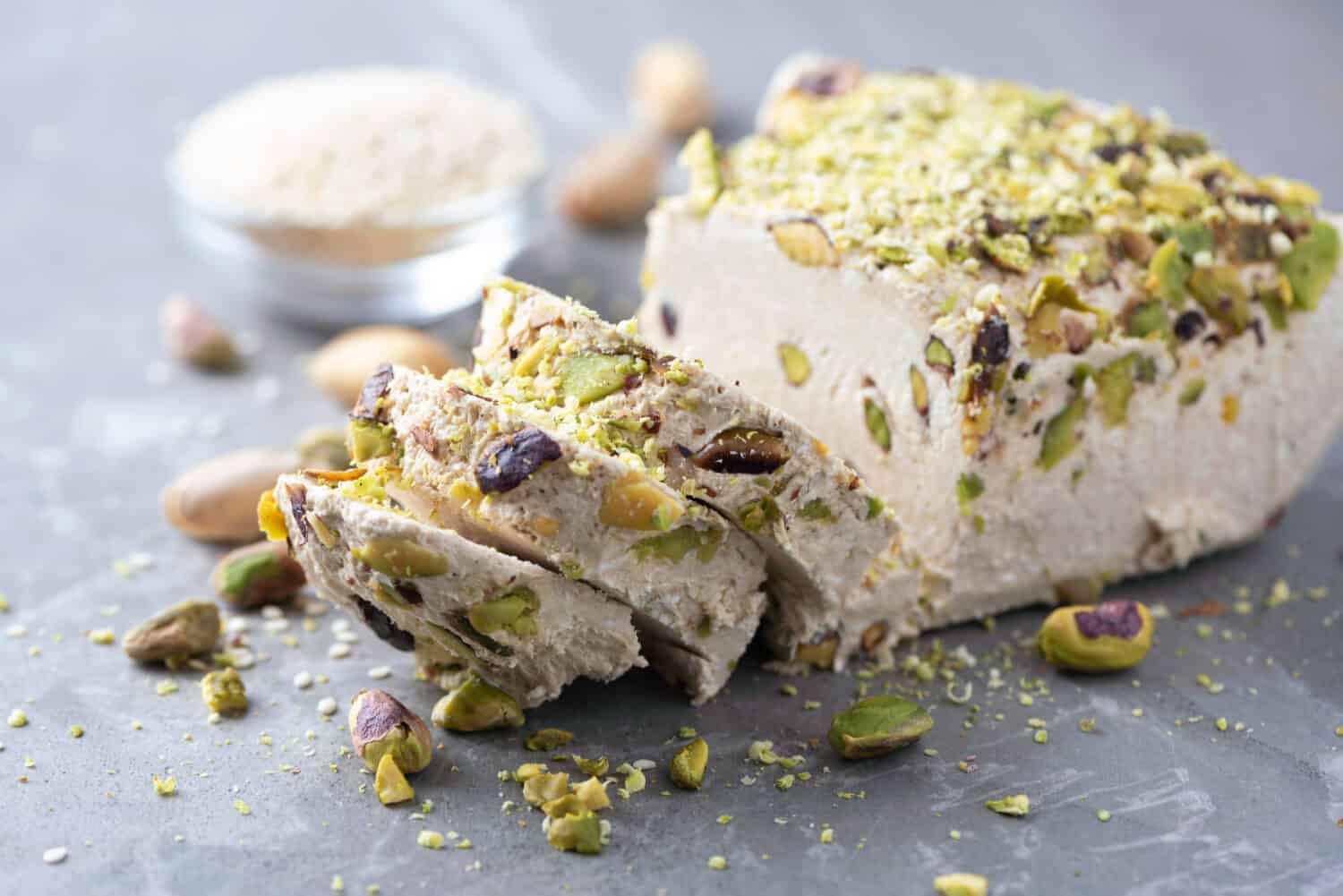
Halva is a traditional dessert that contains pistachios.
©j.chizhe/Shutterstock.com
Coming in at number three is the Middle Eastern country of Turkey, which produced 119,000 tons of pistachios in 2022.
Much of the Turkish pistachio crop grows in the region of Anatolia, which hosts a favorable climate for pistachio trees. The small city of Gaziantep is revered for the quality of its pistachio yield. Two of the main Turkish pistachio cultivars are the Kirmizi and Uzun pistachios.
Some have noted that Turkish pistachios are smaller and denser than pistachios from the United States or Iran. The pistachio features heavily in many Turkish deserts. This includes the nominal Turkish Delight and the delicious regional dessert known as Baklava.
4. China

Chinese Pistachios are a specific decorative varietal.
©Tonic Ray Sonic/Shutterstock.com
China is the world’s fourth-largest producer of pistachios, adding another notch onto its belt of things that it produces much of. The pistachio is a relative newcomer to China’s agricultural exports, having expanded greatly during the mid-2000s.
Some of the main countries that China exports its pistachios to include Vietnam, Australia, and Malaysia. On the contrary, The United States was the largest importer of pistachios to China, bringing in almost as much as China exports in general.
The Chinese Pistachio is less well-known than the Pistacia vera tree that fills world markets (Pistacia chinesis). The Chinese Pistachio appears mostly as a decorative garden tree.
5. Syria
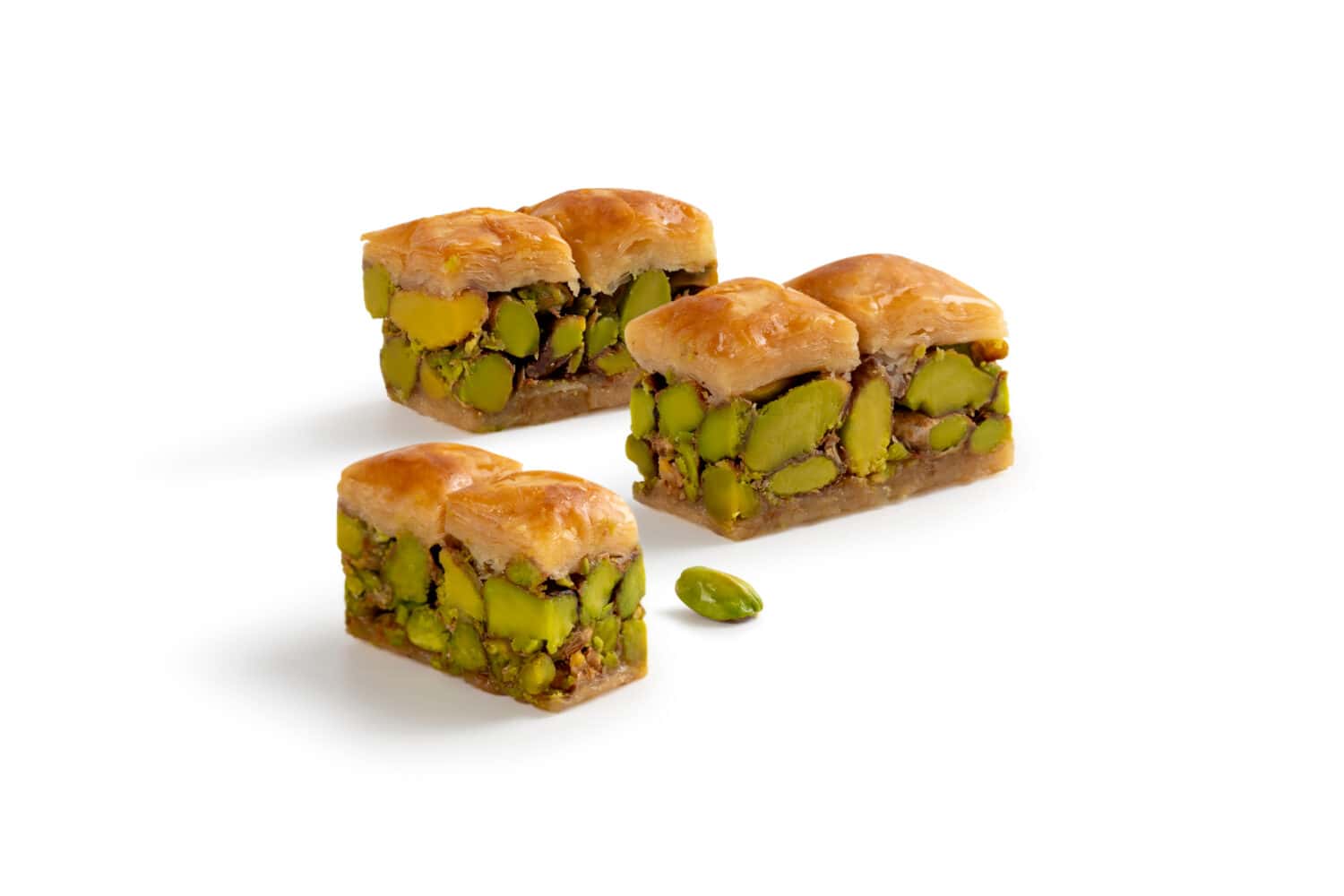
Baklava is a traditional Syrian dessert.
©A L F O U A D/Shutterstock.com
The fifth-largest producer of pistachios in the world is the Middle Eastern country of Syria. Syria produced around 43,000 tons of pistachios in 2022.
Syria’s pistachio output has unfortunately been stymied in recent years. This is partially due to the period of violence and conflict that has erupted in the country in the past decade. Despite this violence, the country has recovered in the last year or two, and many farmers have returned to their crops to resume production.
The farmers in Syria face no easy task in returning pistachio crops to normal that have been touched by the conflict. It takes several years for Pistachio trees to actually begin producing fruit. Drought is another factor that has affected pistachio yields in recent years.
6. Madagascar

The highlands of Madagascar are good for pistachio cultivation.
©Pierre-Yves Babelon/Shutterstock.com
The sixth entry on this list is the African island nation of Madagascar. Madagascar produces around 5,500 tons of pistachios each year. Pistachios have found themselves a home in the high country of the nation. These higher elevation areas offer some slight respite from the dense humidity of the lower reaches of the tropical nation.
Madagascar squeezes in pistachio production among a variety of other agricultural products. Some of the other primary crops that Madagascar produces include rice, cassava, corn, and sweet potato.
Agriculture in Madagascar faces several challenges in the decades to come. The deforestation that has occurred on the island nation for decades has caused some heavy environmental damage on the island. However, there are efforts to repair the damaged parts of Madagascar’s environment.
7. Tunisia
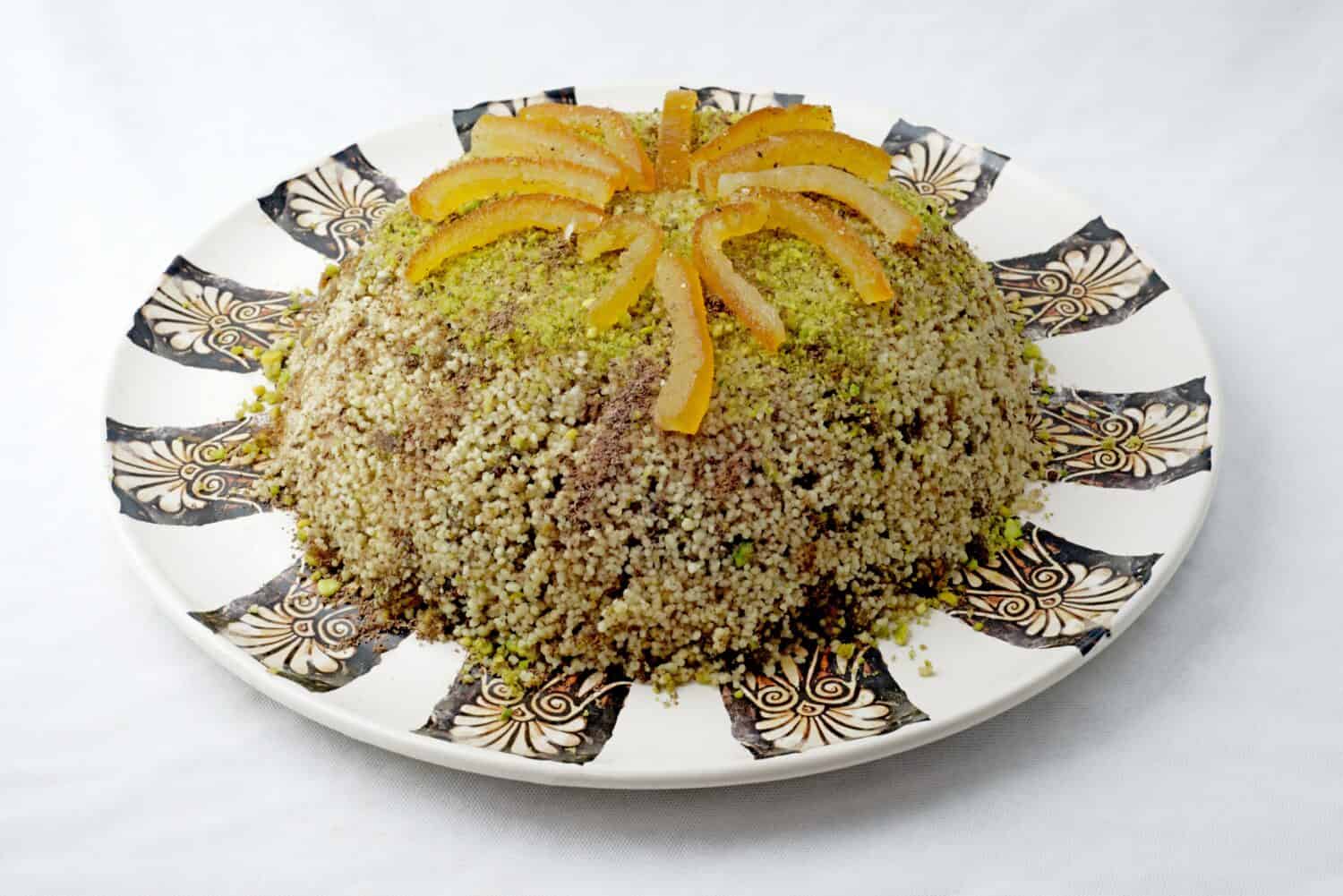
Pistachios garnish a bowl of sweet couscous.
©Maria Aloisi/Shutterstock.com
The desert nation of Tunisia is the world’s seventh-largest producer of pistachios. The nuts adapt well to the arid conditions in the African nation.
Tunisia’s cuisine incorporates the pistachio in a number of different ways. The desert country lies on the Mediterranean ocean. It shares some culinary fixtures with other countries from that region, such as Baklava.
Pistachio production in Tunisia has slowly but surely increased over the last ten years. Should climate and political conditions remain favorable, there’s a chance that Tunisia will be climbing up the list in years to come.
8. Afghanistan
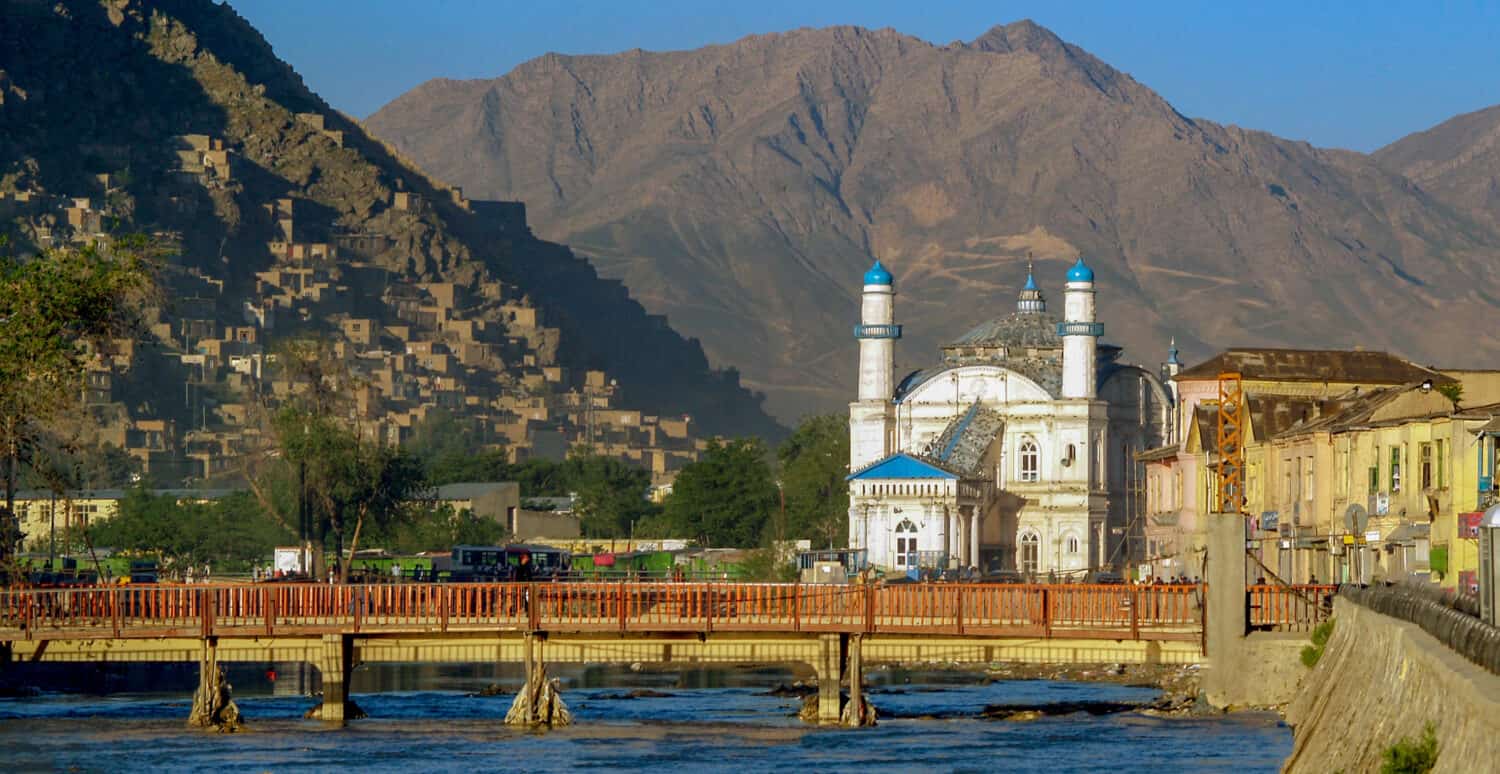
Afghanistan
is one of the countries where pistachios grow naturally.
©Mushtaq B/Shutterstock.com
This entry is one of the countries where pistachios grow natively. However, the pistachios from this region are smaller and more compact than those in their neighboring countries, such as Iran. Some have said that this contributes favorably to their flavor. The country produces around 2,800 pistachios per year.
Pistachios have figured heavily in surprising ways in the waves of conflict that have engulfed the nation in recent years. The Taliban has made millions selling pistachios on the black market. On a lighter note, many NGOs have employed pistachio trees in their efforts to reforest parts of the war-torn country in environmental restoration projects.
Nowadays, the nation’s agricultural output of Pistachios is still robust, if somewhat modest, compared to places like Iran and The United States. This is partially because of the rugged terrain of the landscape. This terrain has historically made it difficult to implement wide-scale agriculture on an economically friendly level.
9. Australia
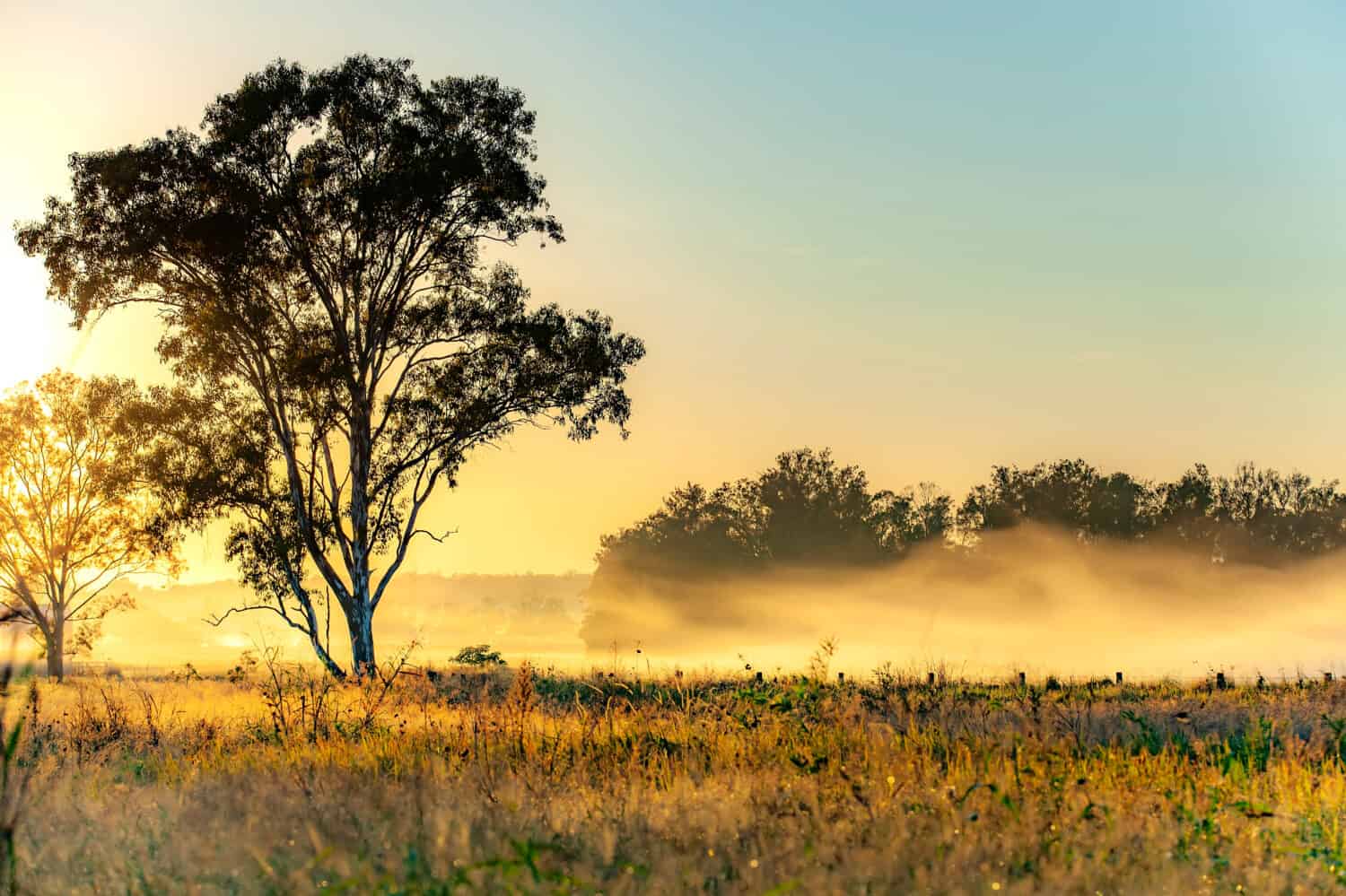
Australia
has proven friendly for pistachio production.
©jamestorm/Shutterstock.com
The great Southern continent is the ninth-largest global producer of Pistachios. It produces approximately 1,500 tons of pistachios for consumption each year.
The primary cultivar of pistachios down under is the Sirora variety of pistachios. Accordingly, this type of pistachio is specifically bred by farmers to respond favorably to the climate conditions in the region.
Many of the pistachios in the country are grown in the River Murray Valley region. This part of the country has the most favorable climate conditions for growing pistachios.
Most Aussie pistachios are sold as-is to be snacked on out of the shell. This contrasts with the pistachios grown in Turkey and Tunisia. These countries prepare their pistachios to be made into culinary products.
10. Kyrgyzstan
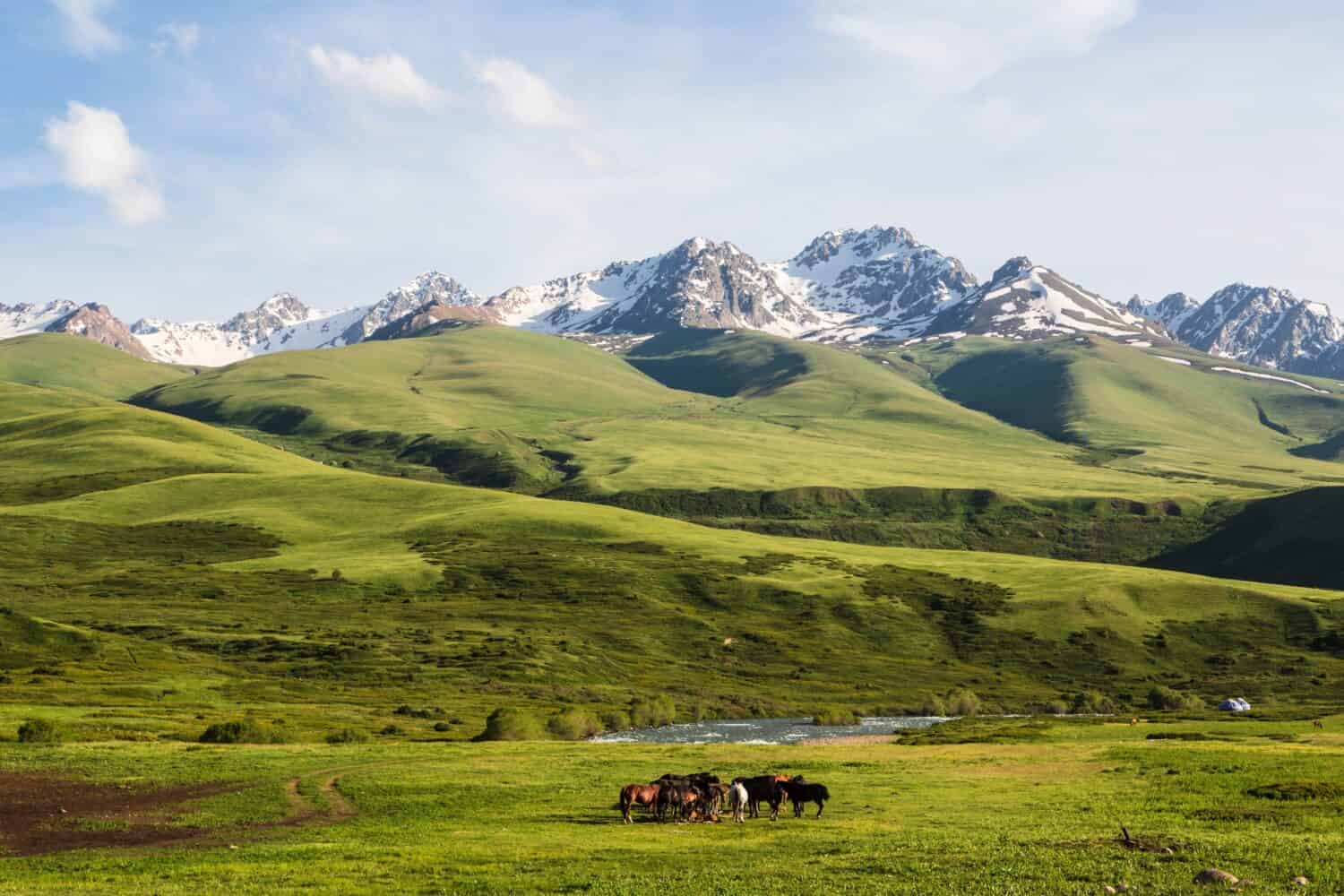
Kyrgyzstan produces a modestly large pistachio crop each year.
©Nastya Smirnova RF/Shutterstock.com
Here comes number ten of the world’s largest pistachio growers. All in all, it produces around 929 tons of pistachios each year.
Kyrgyzstan is also located in the Middle Eastern region. This area of the world has historically proven to be favorable to pistachio production. Some of the other cash crops of the country include tobacco, cotton, and potatoes.
The rugged terrain of this mountain nation has made it difficult to produce many crops on a truly wide scale. Rather, animal husbandry of grazing farm animals fits the mountainous terrain in a more proper way.
The Future of Pistachio Production
Pistachios are a relatively hardy crop and take well to arid climates and other places where more fragile crops struggle.
However, there are threats to maintaining a high level of global pistachio production. In particular, the drought and climate struggles that have afflicted the Central Valley in California have the potential to disrupt the global pistachio market.
Unfortunately, the world’s largest pistachio producers are occasionally politically at odds with each other. Undeniably, this oftentimes figures into the pistachio market in a heavier sense than one might expect. Many of the world’s largest pistachio producers are located in the Middle East. This region has traditionally been subject to political disruption in the past few decades.
Even countries in traditionally mild climates have experienced more erratic climate issues of late. Small fluctuations in the weather can greatly impact crops’ health. For example, drought and erratic climate conditions devastated the Turkish pistachio harvest of 2023.
The pistachio’s position as a global food source and culinary delicacy ensures that people will take the necessary steps to safeguard and care for this foodstuff in the future.
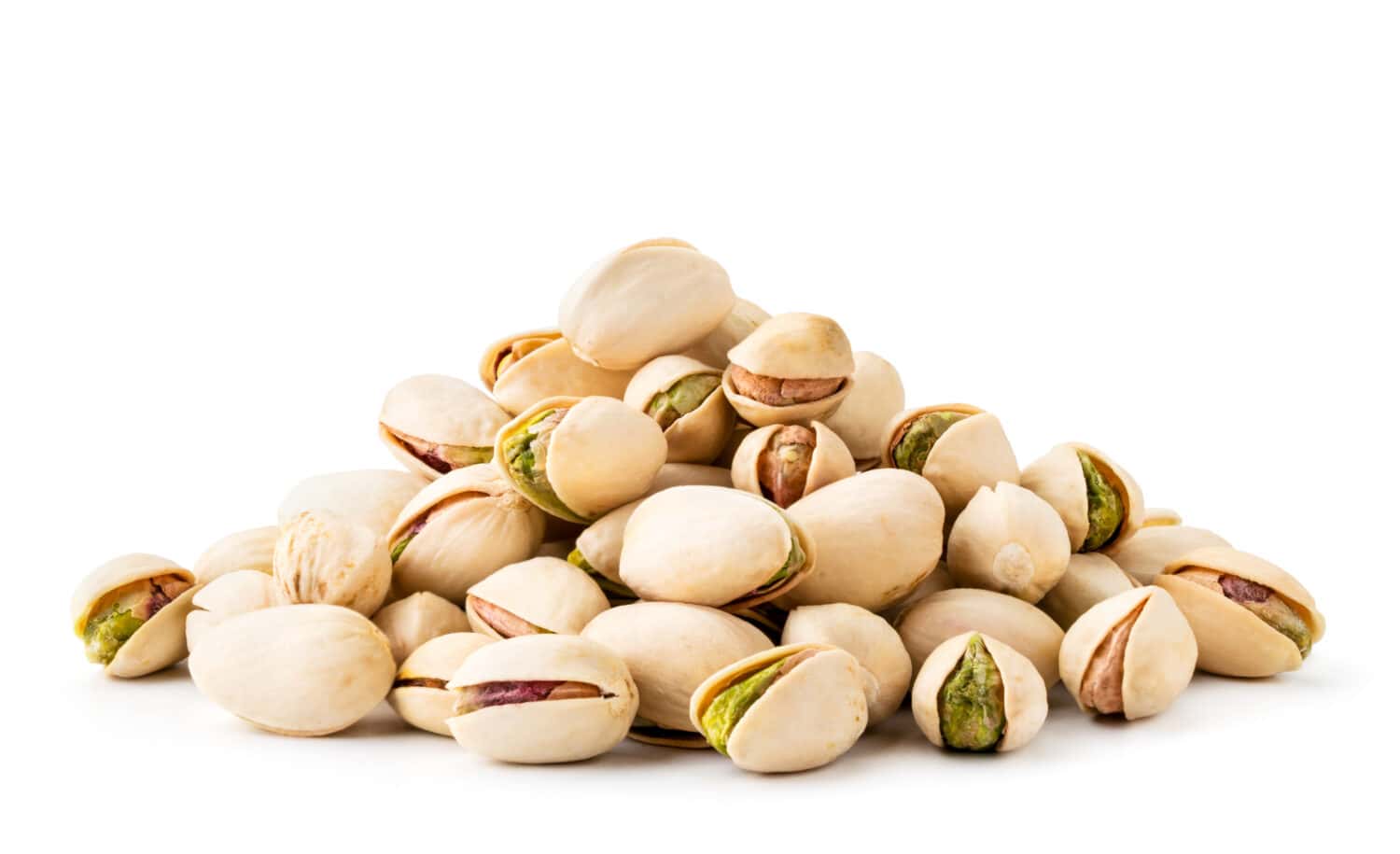
The places where pistachios grow might change in the future.
©innakreativ/Shutterstock.com
| Rank | Country | Pistachios Harvested by Ton |
|---|---|---|
| 1 | USA | 523,000 |
| 2 | Iran | 135,000 |
| 3 | Turkey | 119,000 |
| 4 | China | 78,000 |
| 5 | Syria | 43,000 |
| 6 | Madagascar | 5,500 |
| 7 | Tunisia | 3,100 |
| 8 | Afghanistan | 2,800 |
| 9 | Australia | 1,500 |
| 10 | Kyrgyzstan | 929 |
The photo featured at the top of this post is © Superheang168/Shutterstock.com
Thank you for reading! Have some feedback for us? Contact the AZ Animals editorial team.







